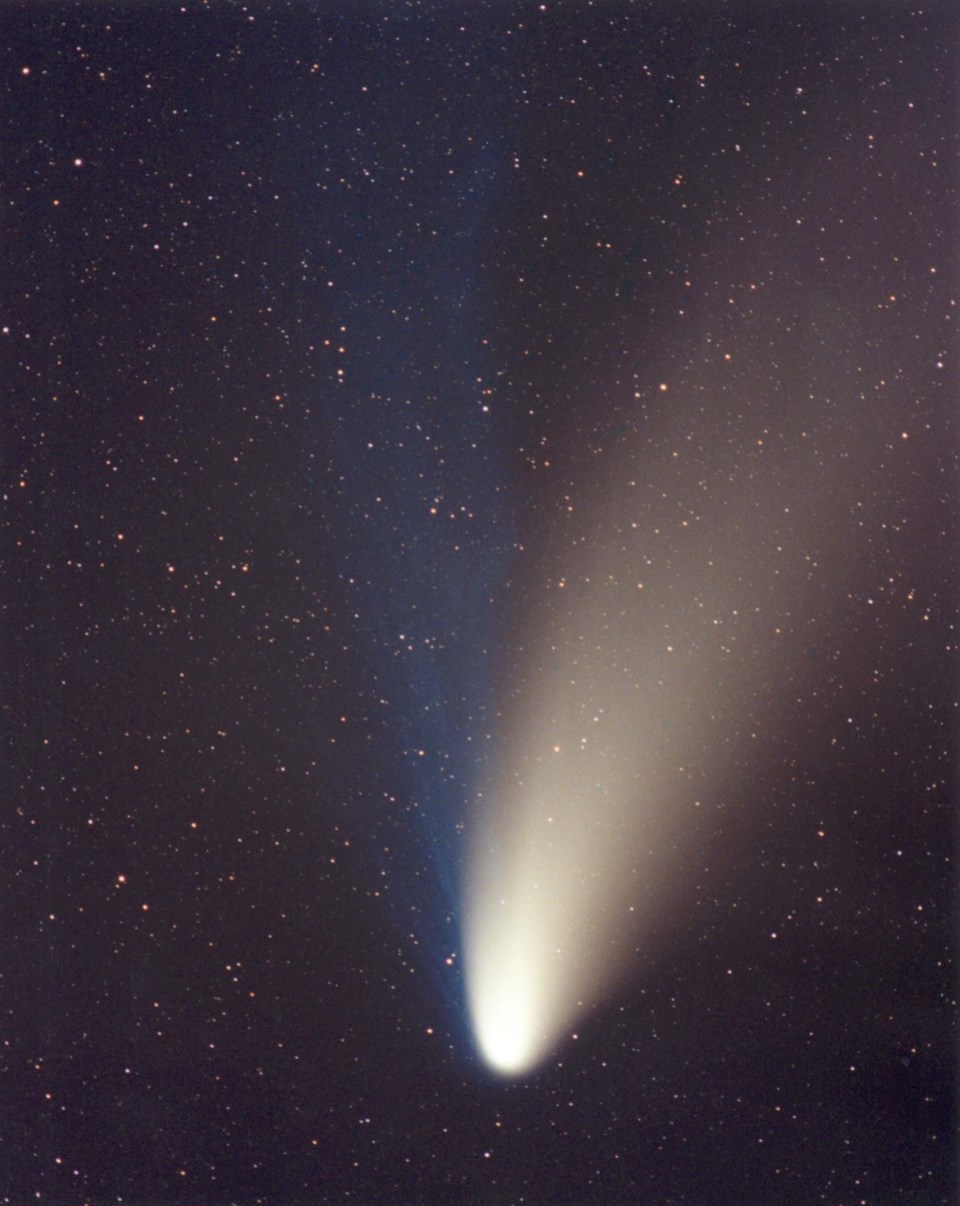A stellar snowball will blaze through the night skies over Okotoks this month for what could be the last time ever.
Alberta astronomers will be watching the skies this month for a glimpse of Comet C/2023 A3 (Tsuchinshan-ATLAS). Discovered in 2023 by China’s Purple Mountain Observatory (which gives comets it spots the traditional name of “Tsuchinshan”) and the automated Asteroid Terrestrial-Impact Last Alert System, this stellar snowball just recently whipped around the sun and will be a mere 71 million kilometres away from Earth on Oct. 12, and should soon be visible above St. Albert.
The comet has been visible in the southern hemisphere for several weeks and should peek above the horizon in Alberta by Oct. 10, said Frank Florian, senior manager of planetarium and space science at the Telus World of Science Edmonton.
“It might be as bright as some of the brightest stars in the nighttime sky,” he said, and possibly bright enough to see during the day (assuming you know where to aim your binoculars).
Amateur astronomer Murray Paulson, who lives just north of Edmonton, said he planned to be out in the countryside with his binoculars on Oct. 9 and 10 to get a glimpse of what some have dubbed “the comet of the century.”
“It should put on a really good show.”
Deep space snowball
A comet is a dirty chunk of ice that zips through space unnoticed by humans until it gets close to our sun. When that happens, the sun’s heat cause the comet to thaw and spew trapped gas and dust, creating a visible, often bluish, tail. Some comets do this so regularly that they leave debris trails which burn up in the Earth’s atmosphere when it crosses them, resulting in meteor showers such as the Geminids.
Paulson said astronomers are excited about Tsuchinshan-ATLAS because of its orbit, which takes it close enough to the sun (58 million km at its closest point, which it reached on Sept. 27) to potentially make it really bright. There was concern that it could explode or plunge into the sun, but the comet appears to have dodged that fiery doom and is now headed in our general direction.
Florian said this comet likely came from the Oort Cloud, which is the huge bubble of icy chunks that surrounds our solar system.
“These [comets] are things left behind from the creation of the solar system,” he said — time capsules from 4.5 billion years ago.
Florian said astronomers should be able to spot this comet in the early evening in the southwest part of the sky very close to the horizon after Oct. 10. Look for a really bright, fuzzy looking star with a glowing tail behind it. The comet will move higher in the sky over the following weeks and should be quite visible until Oct. 24.
This will likely be the only chance anyone alive today will have to see this comet. Florian said its orbit is slightly hyperbolic, meaning it will likely escape the sun’s gravity and never visit Earth again.
Binoculars should be enough, but Paulson said telescope-users might get to see the comet’s nucleus spewing gases like a sprinkler.
“It’s going to be just incredible,” Paulson predicted.




